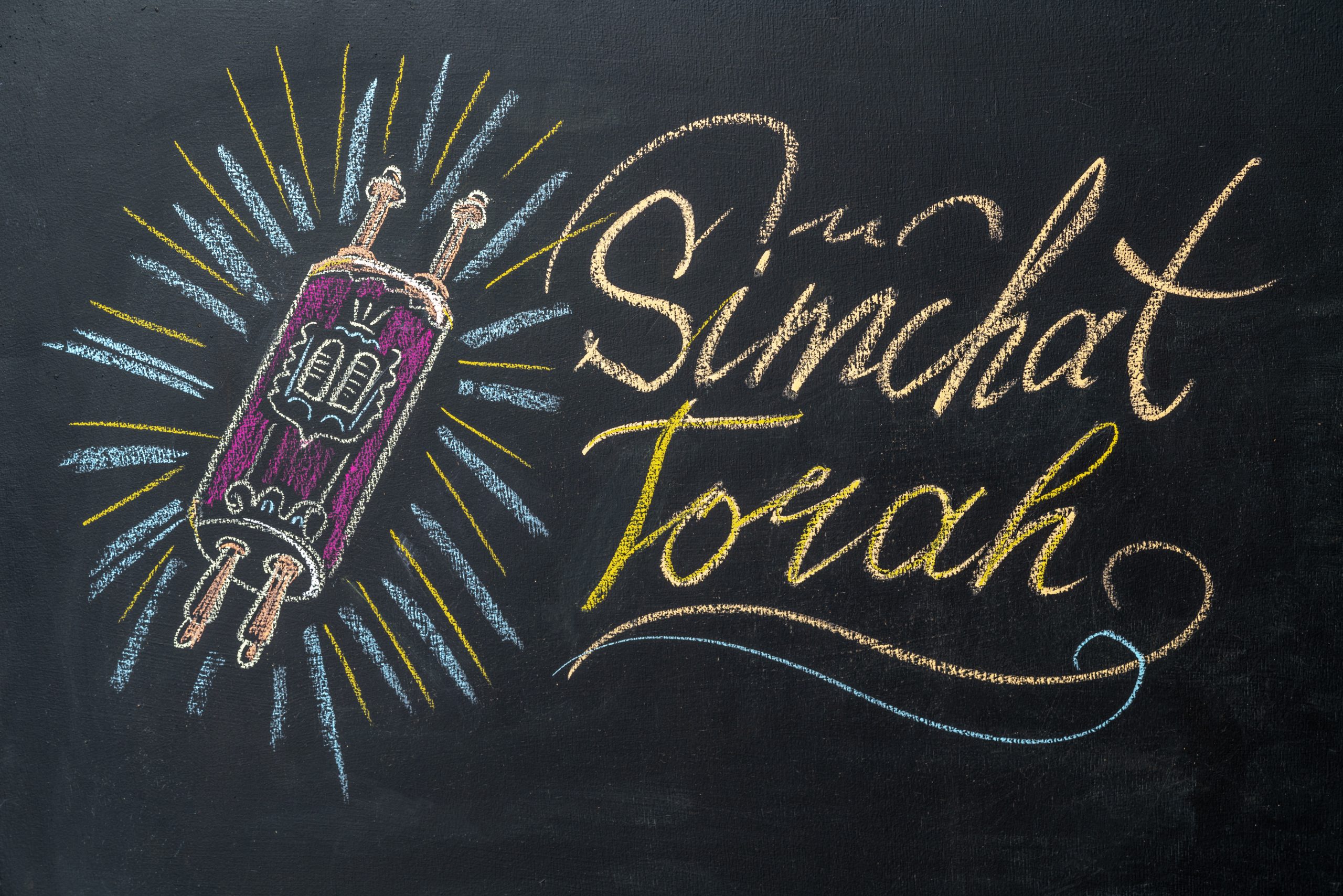What is Shemini Atzeres (or Shemini Atzeret), you ask? Well, Pesach (Passover) has days of yom tov (Festivals, with Sabbath-like restrictions on labor) at both the beginning and the end. Technically speaking, Succos (Sukkot) only has days of yom tov at the beginning. Shemini Atzeres , which is observed at the end of Succos, is actually its own independent holiday.
The individual nature of Shemini Atzeres is apparent in a number of ways. For example, the bracha of Shehechiyanu, is only recited at the start of an extended holiday like Passover and Chanukah. It is, however, recited on Shemini Atzeres. We see that unique sacrifices were offered in the Temple on Shemini Atzeres, different from those of Succos. We don’t perform the mitzvos of Succos on Shemini Atzeres (some people eat in the succah, but they don’t recite the bracha). And in the liturgy, we refer to the holiday as “chag ha’atzeres hazeh” rather than as Succos. So Shemini Atzeres is its own thing, QED.
What Does Shemini Atzeres Commemorate?
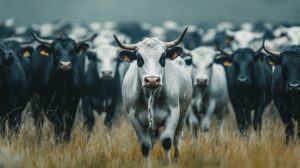 As you may be aware, Pesach commemorates the Exodus from Egypt, Shavuos celebrates the giving of the Torah at Sinai, and Succos recalls how God sheltered us for forty years in the wilderness. Shemini Atzeres is totally different.
As you may be aware, Pesach commemorates the Exodus from Egypt, Shavuos celebrates the giving of the Torah at Sinai, and Succos recalls how God sheltered us for forty years in the wilderness. Shemini Atzeres is totally different.
Over the course of Succos, seventy bulls were offered in the Temple – thirteen on the first day, twelve on the second, etc. These seventy bulls were offered on behalf of the seventy nations of the world. On Shemini Atzeres, however, a single bull was offered, on behalf of the Jewish people.
The Talmud (Succah 55b) explains that Succos is celebrated on behalf of the entire world, but Shemini Atzeres is the Jewish people’s private after-party. God invites us to remain behind one more day, after everyone else has gone, in order to spend some quality time with Him, one-on-One.
So What Do We Do on Shemini Atzeres?
 Shemini Atzeres is a pretty basic yom tov in that it has no mitzvos of its own, but it does have a few things that set it apart. The most prominent perhaps is that we start mentioning rain in our daily prayers. The chazzan kicks this off with a special prayer called “Geshem” (rain), which is inserted into the Shemini Atzeres musaf service.
Shemini Atzeres is a pretty basic yom tov in that it has no mitzvos of its own, but it does have a few things that set it apart. The most prominent perhaps is that we start mentioning rain in our daily prayers. The chazzan kicks this off with a special prayer called “Geshem” (rain), which is inserted into the Shemini Atzeres musaf service.
Also, Yizkor, the memorial prayer for one’s departed relatives, is traditionally inserted into the last day of a series of holidays. Because that would be Simchas Torah (Simchat Torah) – a particularly joyous occasion – Yizkor is moved up and recited on the penultimate day, Shemini Atzeres.
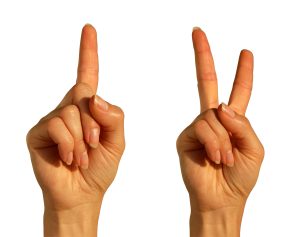 You Mentioned Simchas Torah. What is That?
You Mentioned Simchas Torah. What is That?
Really, Simchas Torah (at least outside of Israel) is simply the second day of Shemini Atzeres. But we’ve really done something special with it.
Before we get into that, we should mention that most Festival days are observed for one day in Israel and two days elsewhere. So, we’re going to talk about Shemini Atzeres and Simchas Torah as two days (as observed outside of Israel). Just be advised that in Israel, they’re a single day.
Okay, But What Is It?
Patience! We read the Torah in a one-year cycle. As soon as we finish it, we begin again. Simchas Torah (literally, “joy of the Torah”) is the day that we complete – and restart – our reading of the Torah.
Cool! So, What Do We Do on Simchas Torah?
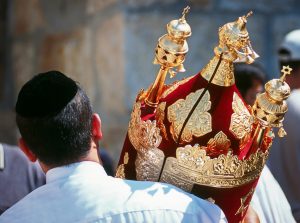 On both Simchas Torah night and Simchas Torah day, we dance joyfully with the Torah scrolls in the synagogue. This is done in a series of circuits around the bimah, called “hakafos.” Each hakafah is preceded by a brief call-and-response with that circuit’s leader, followed by dancing that can go on for many hours in some places. In many places, children celebrate by waving flags.
On both Simchas Torah night and Simchas Torah day, we dance joyfully with the Torah scrolls in the synagogue. This is done in a series of circuits around the bimah, called “hakafos.” Each hakafah is preceded by a brief call-and-response with that circuit’s leader, followed by dancing that can go on for many hours in some places. In many places, children celebrate by waving flags.
Simchas Torah is the only occasion on which we read the Torah at night. Perhaps even more remarkable is how we read the Torah by day. For starters, we read from three Torah scrolls. From the first, we complete the Torah with the reading of V’Zos Habracha, the last parsha at the end of Devarim (Deuteronomy). From the second, we begin Bereishis (Genesis), and from the third we read about the special Temple offerings of the holiday. But it doesn’t end there!
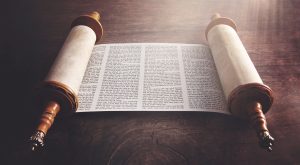 Instead of calling half a dozen congregants to receive an aliyah, as would be the case on most Festivals, the custom on Simchas Torah is to call every man present to the Torah. Not only that, there is a custom to call all the children collectively for their own aliyah! Plus, there are special honors. The person called for the last aliyah in the Torah is called the Chasan Torah (the bridegroom of the Torah), while the one called for the first Aliyah in Genesis is called the Chasan Bereishis (the bridegroom of Genesis).
Instead of calling half a dozen congregants to receive an aliyah, as would be the case on most Festivals, the custom on Simchas Torah is to call every man present to the Torah. Not only that, there is a custom to call all the children collectively for their own aliyah! Plus, there are special honors. The person called for the last aliyah in the Torah is called the Chasan Torah (the bridegroom of the Torah), while the one called for the first Aliyah in Genesis is called the Chasan Bereishis (the bridegroom of Genesis).
Sounds Great! Anything Else?
Oh, there may be a few details we didn’t cover, but that’s pretty much the gist of it. Simchas Torah is a very special day, but the only way to truly appreciate it is to experience for yourself. Look for a shul in your area today!

